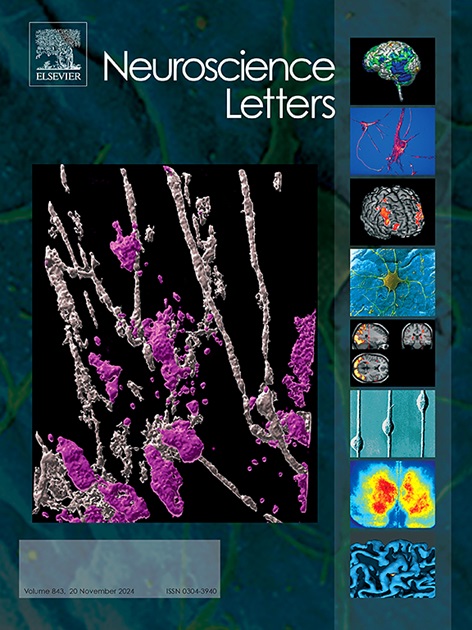激光诱导等离子体对非接触式触觉界面能量变化的认知反应。
IF 2.5
4区 医学
Q3 NEUROSCIENCES
引用次数: 0
摘要
激光诱导等离子体技术提供了一种新的方法,可以在没有物理接触的情况下产生触觉,提供精确和可控的刺激。然而,不同能量水平对人类认知和知觉反应的影响尚未完全了解。本研究旨在以非接触方式呈现激光诱导等离子体的触觉,并研究与等离子体能量参数变化有关的认知特征,特别是脉冲宽度(PW)和设定电流(SC)。实验对象是35名20多岁的右撇子男女。触觉刺激在两种条件下呈现:条件1固定的SC和变化的PW,条件2固定的PW和变化的SC,每个条件调整产生三个能量水平。主观评估包括使用5分制的触觉强度和词汇量评估。评估了16个与触觉相关的术语。使用双向重复测量方差分析来比较两个因素(条件和能量)的得分。结果表明,随着能量等级的升高,感知强度也随之升高。在词汇量评估中,“敲击”和“说唱”等感觉占主导地位,能量水平越高,得分越高。在两种情况下,触觉强度和词汇评价均无显著差异。综上所述,改变激光诱导等离子体的能量大小可以产生不同强度的触觉,本研究中使用的参数成功地唤起了慢振动等特定的感觉。本文章由计算机程序翻译,如有差异,请以英文原文为准。
Cognitive response to energy variations in Non-Contact tactile sensations interface using Laser-Induced plasma
Laser-induced plasma technology provides a novel method for generating tactile sensations without physical contact, offering precise and controlled stimulation. However, the impact of varying energy levels on human cognitive and perceptual responses is not yet fully understood. This study aimed to present tactile sensations using laser-induced plasma in a non-contact manner and investigate the cognitive characteristics linked to changes in the plasma’s energy parameters, specifically Pulse Width (PW) and Set Current (SC). The experiment was conducted with 35 right-handed male and female adults in their 20 s. Tactile stimuli were presented under two conditions: Condition 1 fixed SC and varied PW, while Condition 2 fixed PW and varied SC, with each condition adjusted to produce three energy levels. Subjective evaluations included assessments of tactile intensity and vocabulary using a 5-point scale. Sixteen terms related to tactile sensations were evaluated. A two-way repeated measures analysis of variance was used to compare scores across both factors (Condition and Energy). The results showed that as the energy level increased, the perceived intensity also rose. In the vocabulary evaluation, sensations such as “Tapping” and “Rapping” were predominant, with higher scores at increased energy levels. No significant differences were observed between the two conditions for either tactile intensity or vocabulary evaluations. In conclusion, varying the energy magnitude of laser-induced plasma can produce tactile sensations of different intensities, and the parameters used in this study successfully evoked specific sensations like slow vibration.
求助全文
通过发布文献求助,成功后即可免费获取论文全文。
去求助
来源期刊

Neuroscience Letters
医学-神经科学
CiteScore
5.20
自引率
0.00%
发文量
408
审稿时长
50 days
期刊介绍:
Neuroscience Letters is devoted to the rapid publication of short, high-quality papers of interest to the broad community of neuroscientists. Only papers which will make a significant addition to the literature in the field will be published. Papers in all areas of neuroscience - molecular, cellular, developmental, systems, behavioral and cognitive, as well as computational - will be considered for publication. Submission of laboratory investigations that shed light on disease mechanisms is encouraged. Special Issues, edited by Guest Editors to cover new and rapidly-moving areas, will include invited mini-reviews. Occasional mini-reviews in especially timely areas will be considered for publication, without invitation, outside of Special Issues; these un-solicited mini-reviews can be submitted without invitation but must be of very high quality. Clinical studies will also be published if they provide new information about organization or actions of the nervous system, or provide new insights into the neurobiology of disease. NSL does not publish case reports.
 求助内容:
求助内容: 应助结果提醒方式:
应助结果提醒方式:


